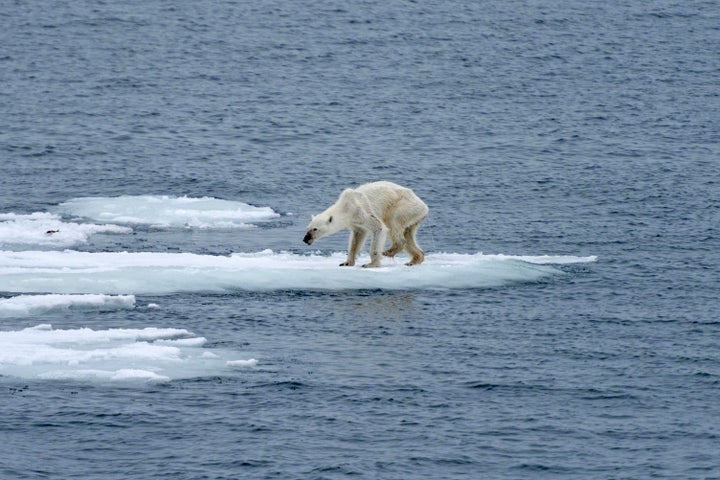A photo of an emaciated polar bear is stirring a debate about the consequences of climate change.
Photographer Kerstin Langenberger of Arctic Dreams photography shared a photo on her Facebook page last month of a severely thin polar bear with protruding bones, taken in the Arctic Ocean's Svalbard region. Langenberger noted how she has noticed the summers getting warmer, the ice melting and more bears spending time on land.
"I realized that the fat bears are nearly exclusively males which stay on the pack ice all year long," she wrote. "The females, on the other hand, which den on land to give birth to their young, are often slim. With the pack ice retreating further and further north every year, they tend to be stuck on land where there's not much food."
"Only [a] few times I have seen beautifully fat mothers with beautifully fat young," she added. "Many times I have seen horribly thin bears, and those were exclusively females -- like this one here. A mere skeleton, hurt on her front leg, possibly by a desperate attempt to hunt a walrus while she was stuck on land."

Langenberger said that, although some reports indicate Svalbard bear populations are rising, she has seen several dead bears. While life in the Arctic is difficult for multiple species, experts say the shocking condition of the bear photographed by Langenberger may very well be attributed to recent climate change.
"[R]eports and images of thin or dead adult bears from the Barents Sea region of late are concerning and are also consistent with what we expect to see in a warming Arctic," Geoff York, senior director of conservation at Polar Bears International, told The Huffington Post in an email. "Loss of sea ice is largest in the Barents Sea region, where the summer ice free period is now 20 weeks longer than when records began in 1979."
The environment of the region in 2015 stands in stark contrast to the environment 30 years ago.
"As someone who spent 14 consecutive seasons out on the sea ice, and who has focused on Arctic work for nearly 20 years now, it was rare to see reports of dead bears in the wild in the '80s and '90s," he added. "During these stable periods of sea ice, if they survived the first few years, adult polar bears were deemed nearly immortal. That seems to be changing in some regions and merits close monitoring."
Also on HuffPost:

